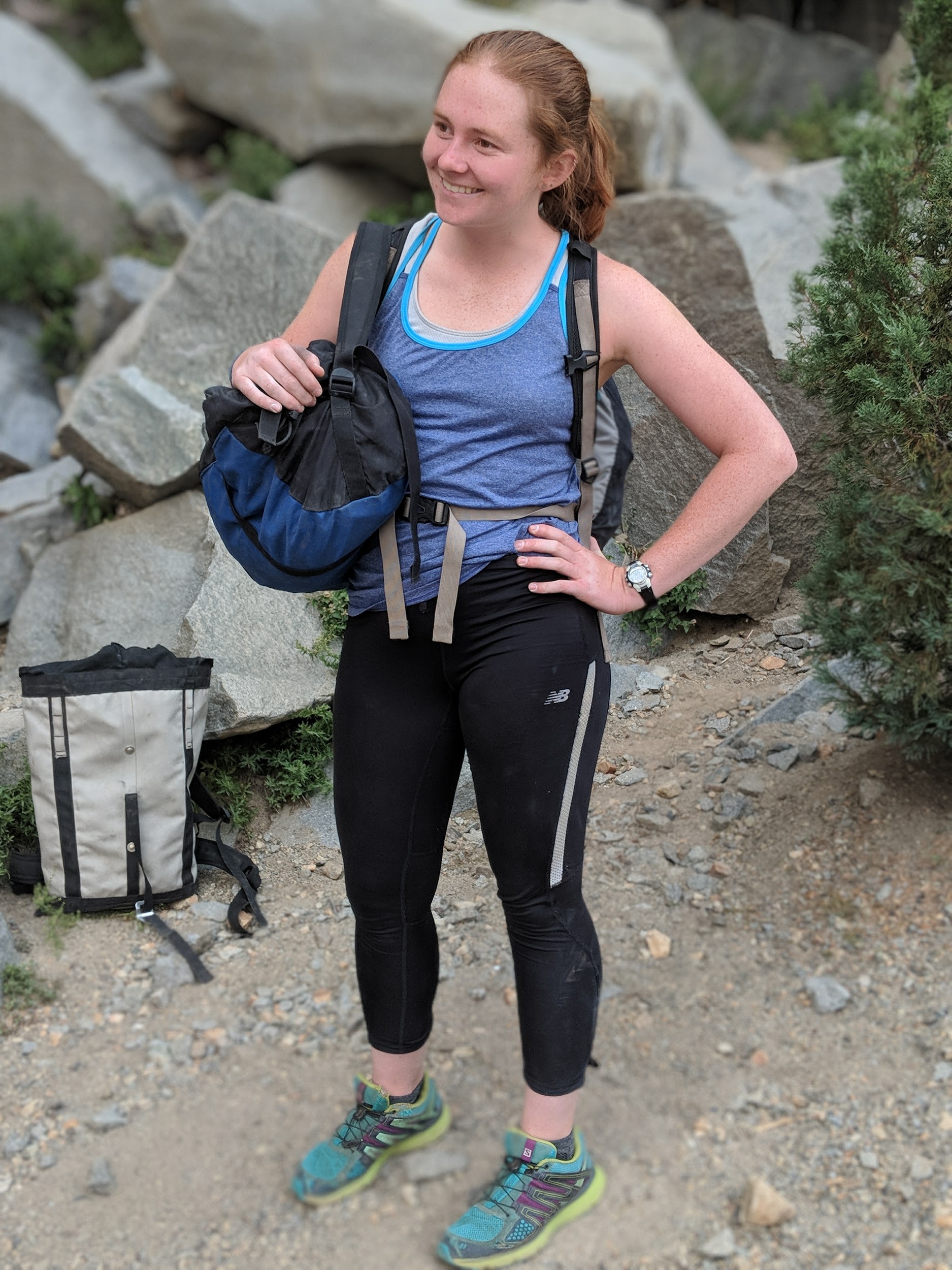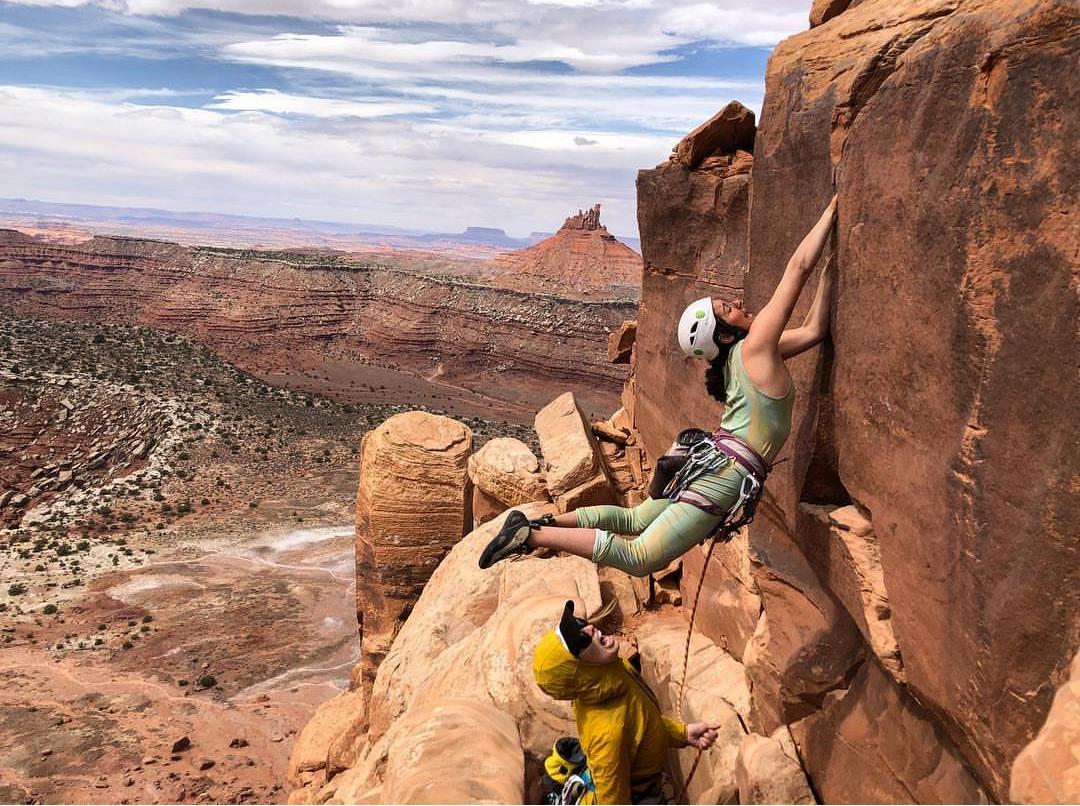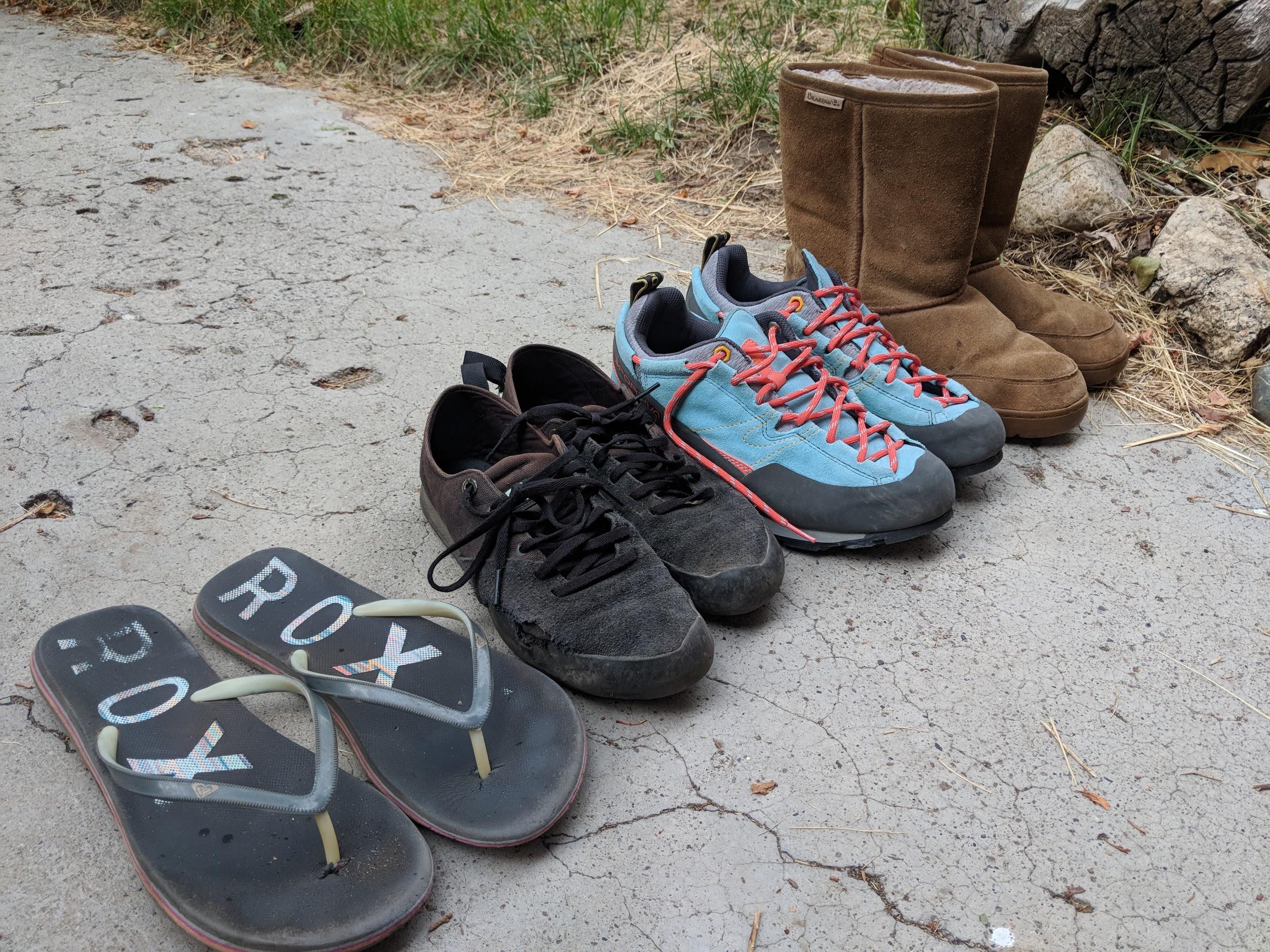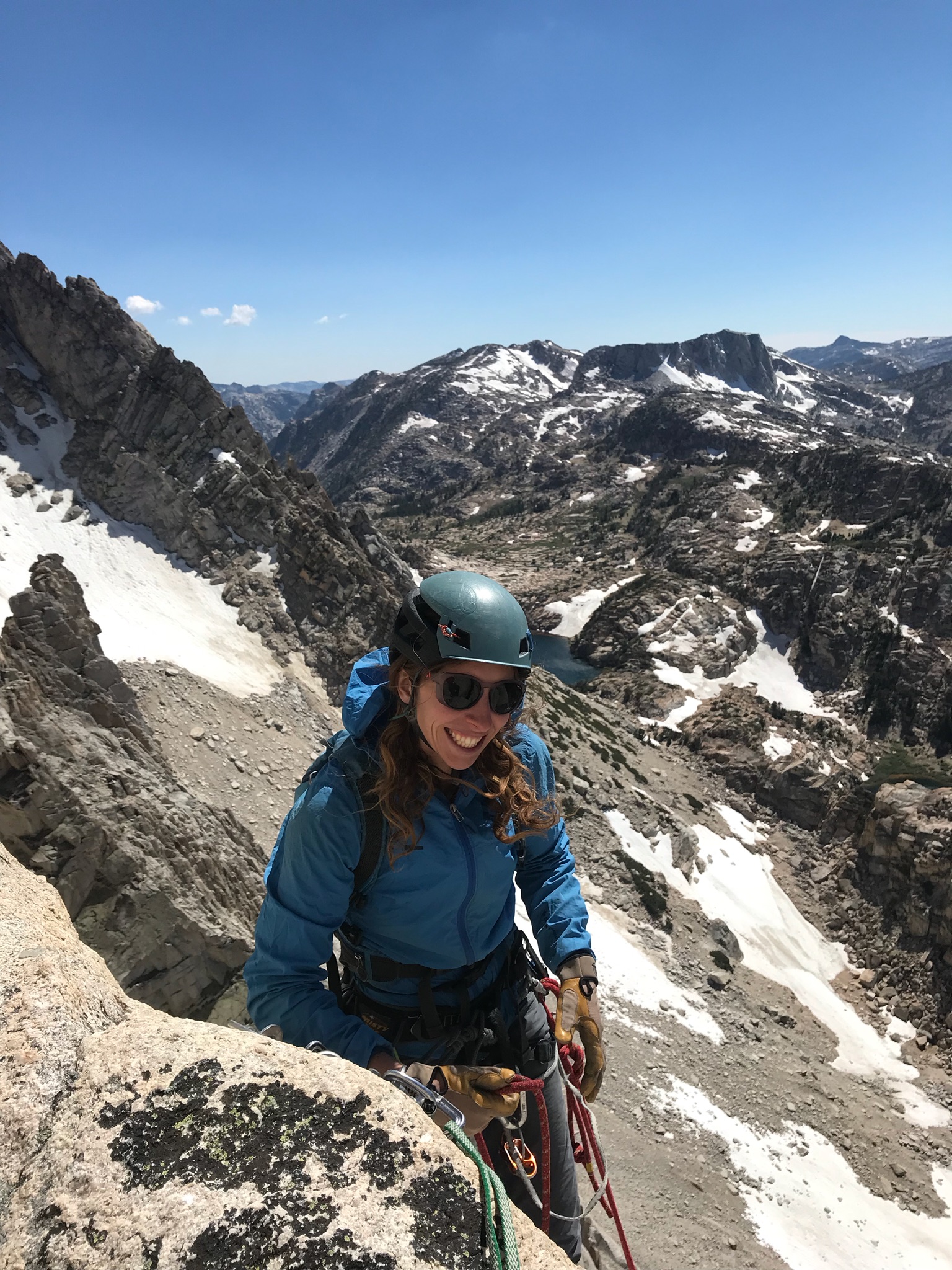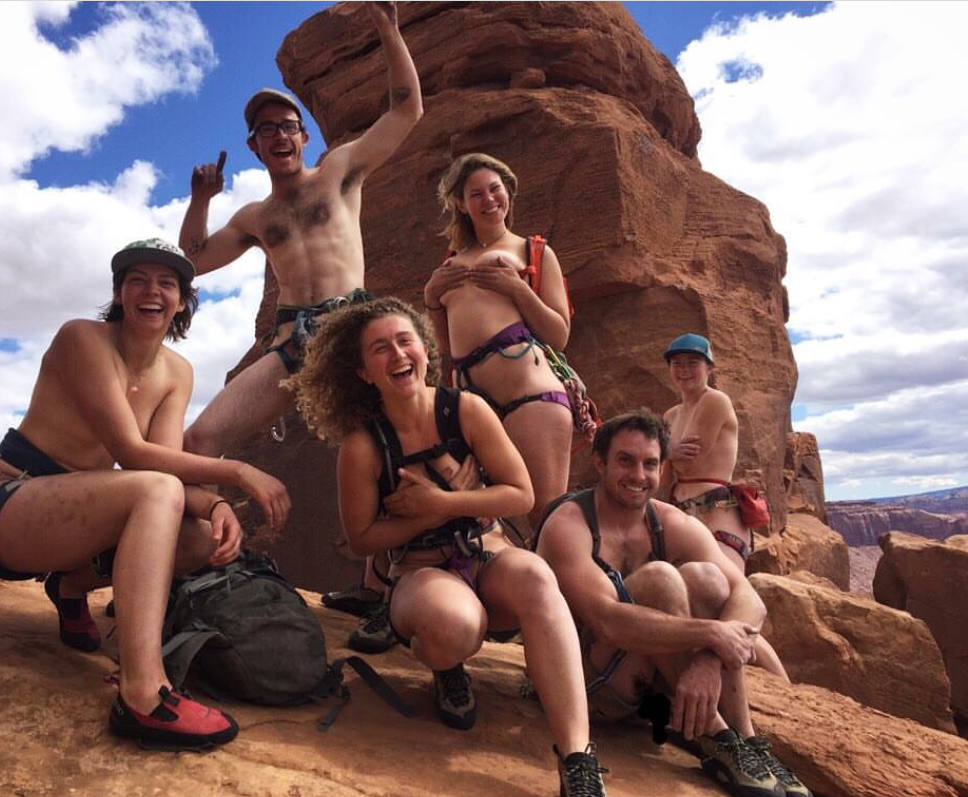It can be hard to know what to wear rock climbing, especially the first few times you try it.
Most other sports make finding the right apparel pretty easy: For running you wear running shorts, for basketball you wear basketball shorts, for swimming you wear a swimsuit.
While many companies do make climbing specific clothes, oftentimes these really aren't necessary for the average climber, especially climbers who spend most of their time in the gym.
But if you’re looking for some advice on how to look like a seasoned pro instead of a total goon, I’ll offer some tips for building your climbing wardrobe.
Driving to the crag in your glacier goggles and belay specs: not recommended.
What to Wear for Indoor Rock Climbing
Since many climbers learn to climb in the gym, we’ll start with that. When it comes to climbing indoors, your number one priority should be comfort. For me that usually means stretchy jeans and a tank top, but you can really wear anything you want.
For the ladies
For the ladies I recommend wearing stretchy pants that fit well, because trying to pull your pants up while you’re climbing can be really challenging and annoying. Many women choose to wear spandex or other synthetic leggings since they have an elastic waistband and plenty of freedom of movement.
Leggings work great, but you can also opt for more durable pants like jeans (my usual pant of choice), just make sure they come up above your hips if you’re planning to climb on ropes, since harnesses tend to push your pants down if you wear low-rise pants and it makes it pretty hard to focus when you’re worried about the whole gym seeing your butt.
Alison Kaplan rock climbing" title="Stretchy denim: sylish and practical!
I don’t usually wear shorts because I don’t want to have to worry about flashing anybody if I go for a wide stem and I get annoyed by the way they tend to bunch up under my harness creating that coveted diaper-butt look, so if it’s hot I’ll usually wear some lightweight capris. If you do want to wear shorts, consider wearing longer shorts or shorts with spandex under them.
Anna sports spandex leggings and a tank top, no climbing specific apparel, but this outfit transitions seamlessly from the gym to the crag.
For the guys
Most of the guys I see at the gym wear their usual street clothes to climb.
If you wear especially tight pants this probably won’t work for you, so you might have to invest in a nice pair of athletic pants, sweat pants, or just some looser casual pants.
Shorts also seem to work pretty well for guys if they’re made of a somewhat stiff material. Gym shorts, running shorts, and basketball shorts should probably be avoided since they might lead to an unwanted view for someone below you, but a lot of people like swim trunks, cargo shorts, or hiking or climbing-specific shorts by brands like Prana, Patagonia, etc.
Jake's outfit is perfect for climbing in the gym or outside. Patagonia shorts, a coveted Melanzana hoody, and a homemade visor round out his look.
For tops I usually wear tank tops since I don’t like feeling restricted by sleeves, but you can also wear a t-shirt or long-sleeved shirt if you prefer. The same thing applies for the guys, just make sure whatever top you choose doesn’t restrict your arm movement.
In my experience there are so many different kinds of people getting in to climbing right now that you can wear pretty much whatever you want to the climbing gym or the crag and you won’t look out of place.
There are tons of fancy clothes out there designed specifically for climbing, but most of their features aren’t necessary if you’re only climbing in the gym, so if you’re wondering what to wear for your first time rock climbing I really recommend just wearing whatever you feel comfortable in and figuring out your preferences as you get more into climbing.
Juliet would argue that sometimes the best outfit is a lycra unitard
Do you wear socks with climbing shoes?
This is a very common question among beginning rock climbers.
If you’re wearing rental shoes from the gym then definitely keep your socks on, but if you’re buying your own shoes then the choice is up to you. Most climbers don’t wear socks with their climbing shoes since you lose a little sensitivity with socks on and going barefoot allows for a more precise fit, but some people like socks because they keep your shoes from getting stinky.
For the average climber, that little bit of sensitivity probably doesn’t make that much of a difference so if you really prefer socks then go ahead and wear them, just remember that if you size your shoes with socks on and later decide you don’t want to wear socks then your shoes probably won’t fit very well, so make sure that however you try them on is how you plan to wear them.
What to Wear Outdoor Rock Climbing
The same clothes that work in the gym generally work for climbing outside too, but you may have to adjust your outfit depending on the weather and the type of climbing you’re doing.
Oftentimes the climbers you see outdoors will be wearing climbing-specific clothes by fancy brands like Patagonia, La Sportiva, Prana, etc. This technical apparel works great, but you can also be perfectly comfortable climbing outside without breaking the bank. There are a few things I usually take into consideration when getting dressed for a day of climbing outside:
1. How long is the approach?
The number one thing determined by the approach length is my footwear. For a short, easy approach I’ll usually wear flip flops or sandals if it’s hot or off-brand UGGS if it’s cold.
People sometimes make fun of me for this but that is probably because they’ve never tried it. You can also always wear regular old tennis shoes regardless of the temperature.
For medium-length approaches on established trails I usually wear approach shoes or trail runners.
If the approach has lots of scrambling or if I’m climbing something that has a walk-off, then I’ll definitely wear approach shoes, and for anything longer than two or three miles I’ll usually wear trail runners. These footwear choices are mostly based on personal preference, and approach shoes are probably the best bet if you’re not sure what the approach will be like.
A shoe for every ocassion. L to R Roxy flip flops, 5.10 Urban Approach shoes, La Sportiva Boulder X, Bearpaw sheepskin boots.
2. What’s the weather like?
I never climb outside in shorts because my knees get too scraped up, so if it’s hot I wear lightweight synthetic pants or capris, and if it’s colder I usually wear stretchy jeans, leggings, or climbing pants.
Climbing pants are nice for longer approaches and variable weather since they usually transition pretty well from warm weather to cool weather. Jeans and leggings are great for sport cragging or bouldering on a mild day.
3. What type of climbing will I be doing?
Climbing pants and jeans tend to be more durable than leggings, so if you’re planning to climb offwidths, physical cracks, or routes on especially coarse rock you might want to leave the leggings at home unless you don’t care about putting holes in them.
If, however, you’re going out for a day of bouldering or cragging then casual pants or leggings should work just fine.
Joslyn loves the Mountain Hardwear Dynama pants, which are thin enough to wear in warmer temps but more durable than leggings.
Layering
The best way to make sure you’re comfortable on a big day of climbing is to really perfect your layering technique.
The number one rule of cold weather climbing is DON’T WEAR COTTON! If you have a bunch of warm layers on but you’re wearing a cotton t-shirt underneath and you sweat through it, you’re going to be cold as soon as you stop moving.
It’s fine to wear cotton shirts on your bouldering and cragging days, but if you’re going up into the mountains leave the cotton behind and opt instead for a wool or synthetic base layer.
I usually wear a synthetic sports bra with a thermal base layer on top and then layer over that with my Patagonia R1. I also stuff a lightweight down jacket in my backpack just in case and I bring my Black Diamond Alpine Start Hoody windbreaker on pretty much every multipitch climb I go on.
This layering system works really well for me on my average alpine climbing days, but I tweak it according to the weather forecasts for wherever I’m going.
I'd nominate the Black Diamond Alpine Start Hoody for gear of the year. It's super packable, stretchy, and the best windbreaker I've ever had.
When you’re first figuring out how to layer for your climbing trips, it’s always better to bring too many layers, so toss one more than you think you’ll need into your pack until you’ve really figured out your system.
So as you can tell, there are tons of options when it comes to choosing an outfit for climbing. You can wear climbing specific clothes or you can wear your street clothes or you can wear a unitard. It’s really all about comfort, and in time you’ll figure out what works best for you. Some crazy hippies even choose not to wear any clothes at all!
Photo courtesy of Kaya Lindsay @onechicktravels



